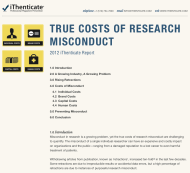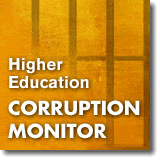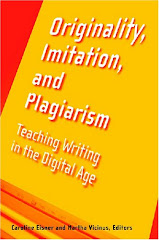Scholars are passing off old work as new to drive up publications counts.
Pressure to publish is pushing many academics to plagiarise large volumes of their own work by "dressing up" their old research to appear as if it were new, a study has found.
Researchers using text-matching software have highlighted the phenomenon of "self-plagiarism", in which academics recycle sections of their previously published work without proper citations.
Scholars who engage in the practice, which undermines academia's pursuit of original knowledge, can gain an unfair career advantage over their more honest colleagues, the researchers say.
A pilot study by Tracey Bretag and Saadia Carapiet from the University of South Australia found that 60 per cent of authors in a random sample of 269 papers from the Web of Science social science and humanities database had self-plagiarised at least once in the period 2003-06. Self-plagiarism was defined "quite generously" as occurring when 10 per cent or more text from any single previous publication was reused without a citation.
"The truth is that if these authors had self-cited in each case, it is unlikely that the editors would have published their work because they would have seen that it had all been published before," Dr Bretag said.
Dr Bretag, who presented a paper on her research last week at the Joint Information Systems Committee's Third International Plagiarism Conference at Northumbria University, believes academics need clearer rules. "I think we ask more of our students than we do of ourselves," she said.
"This issue underpins everything we do as academics. Are academics here to churn out paper after paper saying the same thing over and over again? Academic work is supposed to be original knowledge creation. But as long as you reward this behaviour, it is very hard to change it."
Her findings were likely to represent only the tip of the iceberg, she said, because the study ignored dual or duplicate publication, in which identical articles are printed in different journals. A number of recent studies in medicine and health sciences have found dual-publication rates of about 3 per cent.
John Barrie, chief executive of iParadigms and the man who developed the technology behind Turnitin, the plagiarism-detection software, described self-plagiarism as a "huge" problem.
"Academics receive tenure based on their publications - it is publish or perish. That system creates this massive conflict of interest," he said.
"Anybody who has done any research knows it is very difficult to do. You just can't crank out five, ten papers a year unless (...) you have a research team of 20 people."
This month sees the launch of CrossCheck, an anti-plagiarism system for academic journals created by iParadigms to help publishers verify the originality of submitted work. It will cover 20 million journal articles from major publishers including Elsevier, Nature Publishing Group, Oxford University Press and Sage.
Liz Smith, the head of journal development at Elsevier, said: "Self-plagiarism does happen - it actually happens frequently, I think. We see redundant publication, when the same data are given a different slant, and we've had to withdraw papers that have turned out to be duplicates or near duplicates."
CrossCheck will help editors to spot many types of ethical infringement, she said. "It doesn't matter whether you are duplicating someone else's text or your own, if it is in the CrossCheck database, or on the web, it will be picked up."
rebecca.attwood@tsleducation.com.








